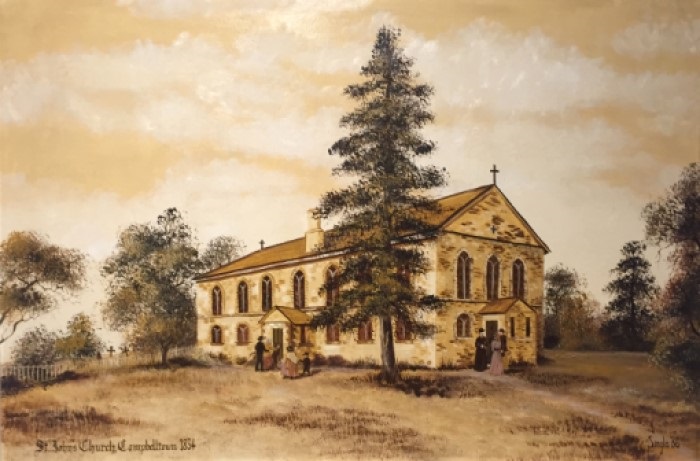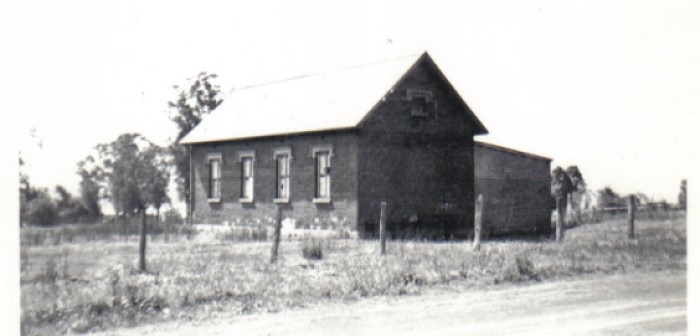Original St John's Catholic Church Campbelltown
Campbelltown's original St John's Catholic Church(PDF, 233KB), erected during the 1820s and 1830s, on the hilltop near Broughton Street. It is recreated here at its prime, in an oil painting by Sandy Inglis. The building functioned as a church until the 1880s, when parishioners - tired of walking up the hill to mass - built a new St John's Church in Cordeaux Street. The "old" church became a Good Samaritan convent school for girls - St Patrick's College - which remained on the site until 1969, when it transferred across to the former St John's Preparatory School for Boys on a nearby hilltop.

(Image sourced from Campbelltown Catholic Club)
Mount Gilead Windmill
The convict-built windmill at Thomas Rose's Mount Gilead farm was erected in the 1830s. It was topped by a moveable cap made of wood, as the sails had to face into the shifting wind. It is the best surviving example of its kind in NSW. As painted by Sandy Inglis. Learn more about this historical site at Mount Gilead(PDF, 52KB).

(Image sourced from Campbelltown Catholic Club)
An early school building
One of the earliest school buildings in the Campbelltown area was St Peter's Church School Building(PDF, 379KB) made up of three rooms shared by the local school children and local magistrates. This building stood until 1973, when it was demolished for the Moore Oxley Bypass construction.

(Image sourced from Campbelltown and Airds Historical Society)
Local Watering Hole
The Forbes Hotel stood on the corner of Railway Street and Queen Street. Location has been a local "watering hole" for over 100 years until demolition of Lack's in 1984.Stood from 1831 to around the turn of the century when it was replaced by the Federal Hotel, which later became Lack's. An early hotel built by Daniel Cooper - convict made good, became a successful businessman. Mr Cooper was also called as a witness at the Fisher trial, learn more about Daniel Cooper's connection to Fred Fisher.

(Image sourced from Sedgewick Collection, Campbelltown and Airds Historical Society)